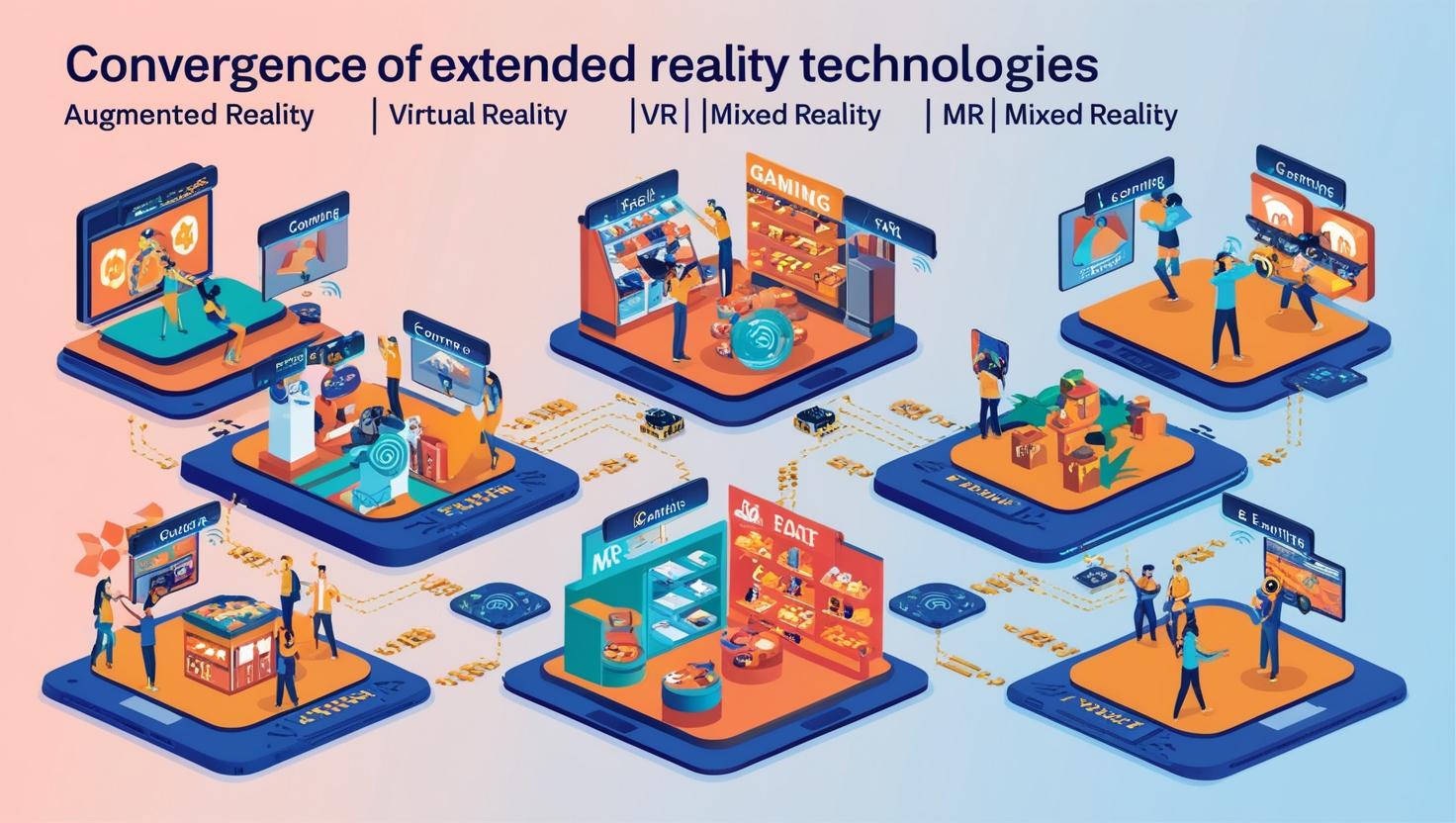Extended Reality (XR)—a collective term that encompasses Augmented Reality (AR), Virtual Reality (VR), and Mixed Reality (MR)—is no longer confined to entertainment or gaming. Today, XR technologies are transforming the way industries operate, train, and deliver experiences. Among the sectors seeing the most profound impact are healthcare, retail, and manufacturing, where XR is helping solve real-world challenges and unlocking new levels of efficiency, engagement, and innovation.
Healthcare: Enhancing Precision, Training, and Patient Outcomes
In the healthcare sector, XR technologies are redefining how professionals diagnose, treat, and train.
Virtual Reality (VR) is increasingly used in surgical training, allowing medical students and professionals to simulate complex procedures in a risk-free environment. This immersive learning accelerates skills development and enhances confidence without jeopardizing patient safety.
Augmented Reality (AR) is also improving real-time guidance during surgeries. Surgeons can overlay 3D visualizations of organs, tissues, or instruments onto a patient’s body, allowing for greater precision. AR-assisted navigation tools are especially helpful in minimally invasive procedures where visibility is limited.
For patients, XR brings new possibilities in rehabilitation and therapy. VR can assist in pain management, mental health treatment, and physical therapy by creating controlled, engaging environments that encourage movement, mindfulness, or exposure therapy. As a result, XR isn’t just enhancing healthcare education—it’s improving patient outcomes directly.
Extended reality market Growth
The extended reality industry is expected to reach USD 84.86 billion by 2029, up from USD 24.42 billion in 2024, at a CAGR of 28.3% from 2024 to 2029.
Download PDF Brochure @ https://www.marketsandmarkets.com/pdfdownloadNew.asp?id=147143592

Retail: Redefining the Shopping Experience
The retail industry is undergoing a significant transformation as XR bridges the gap between digital and physical shopping experiences.
Augmented Reality enables customers to “try before they buy”—from testing how furniture looks in their living room to virtually trying on glasses, makeup, or clothing. Brands like IKEA, Sephora, and Nike are leveraging AR to deliver highly personalized and interactive shopping experiences that drive engagement and reduce return rates.
In physical stores, XR enhances the in-store experience with smart mirrors, immersive displays, and virtual assistants that provide product recommendations or information. Mixed Reality (MR) experiences also allow brands to merge entertainment with commerce, creating memorable brand interactions that set them apart in a crowded marketplace.
With e-commerce continuing to grow, XR technologies offer retailers powerful tools to differentiate themselves, increase conversion rates, and build deeper connections with consumers.
Manufacturing: Boosting Productivity and Precision
In manufacturing, XR is emerging as a crucial enabler of Industry 4.0—the smart, connected era of industrial production.
AR headsets and smart glasses are being used to guide workers through complex assembly tasks, quality inspections, and equipment maintenance. Step-by-step instructions are displayed directly in their field of vision, reducing errors and improving efficiency. This hands-free guidance is especially valuable in high-risk or time-sensitive environments.
VR-based training simulators prepare workers for operating heavy machinery or handling hazardous materials, without the risks of real-world practice. This immersive training is faster, more effective, and can be repeated as often as needed.
Meanwhile, digital twins—virtual replicas of physical assets—are paired with XR interfaces to enable real-time monitoring, predictive maintenance, and remote collaboration. This allows engineers and technicians to visualize and interact with machinery from anywhere, saving time and reducing downtime.
Why XR Is Here to Stay
As the cost of hardware decreases and XR software becomes more sophisticated, adoption is accelerating across industries. The convergence of XR with AI, 5G, and cloud computing is also making these experiences more responsive, realistic, and scalable than ever before.
Moreover, the value proposition is clear: XR improves training efficiency, operational accuracy, customer satisfaction, and overall safety. In a world increasingly driven by digital engagement and immersive experiences, XR stands out as not just a tool, but a strategic asset.
Extended Reality is more than a technological novelty—it’s a transformative force. From saving lives in the operating room to reshaping the way consumers shop and how factories run, XR is delivering tangible results across healthcare, retail, and manufacturing. As adoption continues to rise, organizations that embrace XR early will be better equipped to lead in a future defined by immersion, innovation, and experience.
FAQ
1. How does XR benefit the retail industry?
In retail, XR helps create immersive shopping experiences by allowing customers to:
- Virtually try on products (e.g., clothes, makeup, furniture)
- Interact with AR-powered displays in stores
- Experience personalized and engaging shopping journeys
This leads to higher customer satisfaction and lower return rates.
2. What role does XR play in manufacturing?
XR supports smart manufacturing by:
- Providing AR-guided assembly and maintenance
- Offering VR-based training simulations
- Enabling remote support and digital twin integration
These applications boost efficiency, accuracy, and worker safety.
3. What are the benefits of XR across these industries?
XR offers several cross-industry benefits:
- Improved training and knowledge retention
- Enhanced decision-making through real-time visualization
- Reduced operational errors and increased efficiency
- Greater customer engagement and satisfaction
